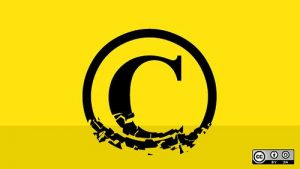 Here is a guest post from the USF Tampa Library’s Copyright Librarian, LeEtta Schmidt.
Here is a guest post from the USF Tampa Library’s Copyright Librarian, LeEtta Schmidt.
Faculty frequently ask if sharing a scan of a chapter or article via Canvas is an acceptable use of copyrighted material. USF Policy (0-105) states that all faculty, staff, and students are responsible for their appropriate use of copyrighted materials, and provides a few guidelines to make it easy for faculty to evaluate their use of materials. It reminds us that a copy must only represent a small amount of the original work, that faculty should consider the four part fair use test if providing course readings under the fair use provision, copying should not be a substitution for the purchase of a book, should not include workbooks or test booklets, should include a copyright notice, and it recommends obtaining permissions if a reading is to be used over multiple semesters. As examples of what constitutes a small amount it elaborates: “a single chapter of a book, an article, or a few photos from a larger collection.”
The USF Libraries’ Course Reserves service uses a system that automatically checks the length of requested readings for amounts in excess of one chapter/article or ten percent of a total work. This amount is based on the recommendation of USF policy and also the US Copyright Office’s Reproduction of Copyrighted Works by Educators and Librarians. If requested readings are found in excess of this amount, reserves staff will reach out to the requesting faculty member and brainstorm possible alternatives and solutions.
One of the most useful and easy ways to avoid infringing on copyrighted content when sharing class readings is to use content from the libraries’ collections. Materials licensed by the libraries, for the most part, have been negotiated for your use in classes. Items requested of reserves that can be found in our databases are often provided by linking to database content, which does not create a copy or possibly infringe on the rights holder’s copyright. If, for example, three or four chapters from an e-book in the libraries’ collections are needed, the e-book chapters could be linked to without worry of infringing on copyright or requiring permissions. Similarly, if a faculty member wanted to use a selection of readings from many different books or articles, course reserves could link to each item and provide the readings in one cohesive list. The libraries has also acquired an additional service to help faculty with creating just this kind of reading list: Curriculum Builder (http://guides.lib.usf.edu/curriculumbuilder) can create a reading list from all of the content in the Libraries’ FindIt! search and import that list directly into a Canvas course. If a whole e-book, available in the libraries collections, is required for the course, it is recommended that faculty take a look through the resources of the Textbook Affordability Program (http://tap.usf.edu/). TAP’s E-books in the Classroom + can be used to ‘adopt’ or identify a textbook as needed for your course, communicating to library staff that you require enough access for all your students.